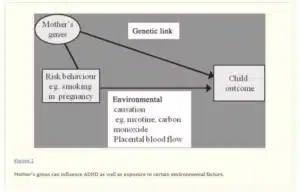This article is about Hyperbaric oxygen therapy for people with autism spectrum. Autism Spectrum Disorder (ASD) is a complex neurodevelopmental condition that affects social interaction, communication, and behavior. While there is no known cure for ASD, various therapies and interventions aim to improve the quality of life for individuals on the spectrum. Hyperbaric oxygen therapy (HBOT) is one such intervention that has gained attention as a potential treatment for ASD. This article explores the use of HBOT in the context of autism and provides insights into its mechanism and effectiveness.
Hyperbaric oxygen therapy for people with autism spectrum
Background: The rising prevalence of autism spectrum disorder (ASD) has increased the need for evidence-based treatments to lessen the impact of symptoms. Presently, no therapies are available to effectively treat individuals with all of the symptoms of this disorder. It has been suggested that hyperbaric oxygen therapy may alleviate the biochemical dysfunction and clinical symptoms of ASD.
Objectives: To determine whether treatment with hyperbaric oxygen:1. improves core symptoms of ASD, including social communication problems and stereotypical and repetitive behaviors;2. improves noncore symptoms of ASD, such as challenging behaviors;3. improves comorbid states, such as depression and anxiety; and4. causes adverse effects.
Search methods: On 10 December 2015, we searched CENTRAL, Ovid MEDLINE, Embase, and 15 other databases, four of which were Chinese language databases. We also searched multiple trial and research registers.
Selection criteria: We selected randomized controlled trials (RCTs) and quasi-RCTs of any dose, duration, and frequency for hyperbaric oxygen therapy compared with no treatment or sham treatment for children and adults with ASD.
Data collection and analysis: We used standard methodological procedures expected by The Cochrane Collaboration, in that three review authors independently selected studies, assessed them for risk of bias, and extracted relevant data. We also assessed the quality of the evidence by using the GRADE approach.
Main results: We included one trial with a total of 60 children with a diagnosis of ASD who randomly received hyperbaric oxygen therapy or a sham treatment. Using GRADE criteria, we rated the quality of the evidence as low because of the small sample size and wide confidence intervals (CIs). Other problems included selection bias and short duration or follow-up.Overall, study authors reported no improvement in social interaction and communication, behavioral problems, communication and linguistic abilities, or cognitive function. With regard to the safety of hyperbaric oxygen therapy (adverse events), they reported minor-grade ear barotrauma events. Investigators found significant differences between groups in total number of side effect events (Peto odds ratio (OR) 3.87, 95% CI 1.53 to 9.82) and in the number of children who experienced side effects (Peto OR 4.40, 95% CI 1.33 to 14.48).
FAQs
FAQs:
Q1: What is Autism Spectrum Disorder (ASD), and why is it a significant concern for individuals and their families?
A1: ASD is a neurodevelopmental condition characterized by challenges in social communication, repetitive behaviors, and sensory sensitivities. It is a significant concern due to its lifelong impact on individuals and their families.
Q2: What is hyperbaric oxygen therapy (HBOT), and how does it work as a potential treatment for ASD?
A2: HBOT is a medical treatment that involves breathing pure oxygen in a pressurized chamber. It is believed that HBOT may reduce inflammation, improve blood flow, and potentially impact brain function in individuals with ASD.
Q3: What is the rationale behind using HBOT for individuals with ASD, and how might it benefit them?
A3: The rationale is that HBOT may reduce inflammation and oxidative stress in the brain, potentially leading to improved cognitive and behavioral functioning in individuals with ASD.
Q4: Are there clinical studies or research supporting the use of HBOT for individuals with ASD? A4: Research on the use of HBOT for ASD is ongoing, and clinical studies aim to provide scientific evidence supporting its effectiveness. Some studies have shown promising results, while more research is needed.
Conclusion
To date, there is no evidence that hyperbaric oxygen therapy improves core symptoms and associated symptoms of ASD. It is important to note that adverse effects (minor-grade ear barotrauma events) can occur. Given the absence of evidence of effectiveness and the limited biological plausibility and possible adverse effects, the need for future RCTs of hyperbaric oxygen therapy must be carefully considered. The personalised and consistent use of HBOT at home can be a plausible opportunity for more research.




